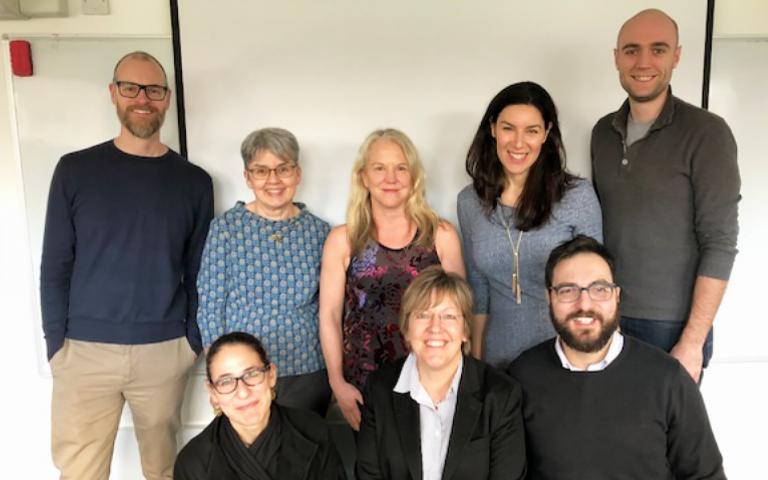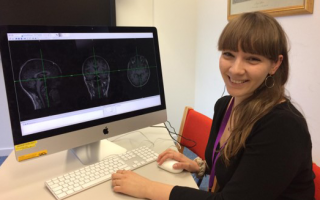UCL and the University of Toronto team up to understand chronic pain in children
Doctors at the two partner institutions have joined forces to investigate an under-studied area of research

13 March 2019
*Update 04/03/2020: Dr Moayedi received a $100,000 grant from the Canadian Institutes of Health Research, on which he is principal investigator and Dr Walker is a collaborator. In addition, Dr Moayedi is a co-investigator and Dr Walker is a consultant on a $9 million multisite NIH HEAL Grant in pediatric musculoskeletal pain. Other outputs from their research include publication in PAIN Reports (5(1):e807, 2020 and posters at the 7th International Congress on Neuropathic Pain (May 2019) and IASP World Congress on Pain (2020).
UCL has teamed up with the University of Toronto to investigate chronic pain in children, in a bid to contribute to what academics at the partner institutions say is an under-studied area of research.
Dr Suellen Walker (UCL Great Ormond Street Institute for Child Health) has partnered with Dr Massieh Moayedi (University of Toronto’s Hospital for SickKids) with support from the UCL-University of Toronto Strategic Partner Funds, to investigate the mechanisms of paediatric chronic pain, which affects a reported 15-20% of children and young people worldwide.
Major world centres
There is a need for research into chronic pain in children as the impact of pain and the types of medical conditions associated with it can differ from adults. UCL and the University of Toronto are uniquely placed to carry out this research. Great Ormond Street Hospital is one of the largest paediatric hospitals in the UK, while SickKids is the largest paediatric hospital in Canada, and both have a strong commitment to research and close links with related academic institutions.
“There are relatively few research hospitals in the world focusing on pain in children,” said UCL’s Dr Walker. “So to bring two of the world’s major centres together is a huge benefit as we have access to clinical populations that are quite unique.”

Dr Moayedi added, “While there has been increasing research that includes neuroimaging to understand chronic pain in adults, there has been much less research in the use of imaging to improve understanding of mechanisms of chronic pain in children. There are about five studies, and these do not encompass a broad range of causes of chronic pain. We tried to do a meta-analysis to inform our study, but at this stage, there just isn’t the data.”
Complementary specialities
Another advantage of the collaboration is that it pools the researchers’ respective areas of expertise in child health. Dr Walker’s UCL team focuses on neuropathic pain, while Dr Moayedi and the Toronto team focus on non-inflammatory musculoskeletal pain. Part of their collaborative research focus will be on assessing the differences and commonalities between different types of chronic pain.
“I have a clinical background but have had a joint clinical academic role for many years. In our Chronic Pain Clinics, children are seen by a multidisciplinary team that includes a pain clinician, psychologist, physiotherapist, nurse specialist and other health care providers as needed. Our research similarly brings together investigators with different expertise and techniques to more fully assess the pain and its impact.
“Massieh’s experience with MR imaging and pain matches well with our co-investigator Chris Clark, who is Professor of Imaging and Biophysics at UCL GOS Institute of Child Health, and has extensive experience using MRI to evaluate changes in the brain throughout development and related to disease in children,” said Dr Walker.
Dr Madeleine Verriotis, Senior Research Associate at UCL GOS Institute of Child Health, spent a week in Toronto and said: “I’ve used various techniques previously, including scalp electroencephalography and functional near-infrared spectroscopy, but I’ve not used MR imaging before so I have been learning from Chris’ team. In addition to this, looking at different analysis methods with Massieh has been extremely helpful for us to proceed with analysis here.”
Similarly, Dr Moayedi and the team from SickKids are benefitting from Dr Walker’s expertise in Quantitative Sensory Testing (QST) in a paediatric population.
Early intervention
Explaining the motivation behind their collaboration, the team point out that early intervention is vital. According to Dr Moayedi, “If these kids can’t go to school and participate in usual activities, it can affect their mood, which makes their pain worse, and it becomes a vicious circle.
“So the whole point is to break this cycle – where we can intervene, and both improve function in childhood, but also reduce the risk of pain persisting into adulthood. The brain can adapt but the longer pain persists, the harder it can be to reverse that effect.”
Dr Walker agrees. “That’s been the huge advantage of the collaboration – being able to apply this specifically to child health. Childhood and adolescence are important times for the maturation of the brain’s connectivity and function.”
Shifting the culture
The researchers are hoping that their joint work will both propel the science and change the thinking around paediatric pain. “One of the problems with chronic pain is that pain is, by definition, subjective; but imaging and QST and the additional measures that we’re using (assessing quality of life, mood, etc.) can help us to more clearly identify changes in pain processing and its impact.
“Adult chronic pain has been poorly understood, but since the 1980s and 1990s that culture has started to shift – imaging studies have been important for demonstrating associated changes in the structure and/or connectivity of regions in the brain,” said Dr Moayedi.
Initially, the researchers were concerned that it would be difficult to find enough children to take part in the research, but they have found children to be keen participants.
Dr Moayedi, who has worked also on pain studies in adults, notes: “Kids are often a lot more willing than adults are.” The teams at UCL and Toronto also recognise the need for further education regarding pain for patients and families, as well as for health professionals.
Continuing collaboration
A year on from receiving their UCL-University of Toronto matched funding, the collaboration is going from strength to strength. Joint meetings have allowed the two institutions to share protocols and match their approaches before combining the data – but they say there is more work to be done.
“I’m applying for a Canadian Institute of Health Research grant,* which focuses on musculoskeletal pain but brings in Suellen as a Co-Principal Investigator,” said Dr Moayedi. “This UCL-UofT fund was a catalyst for us, because it was an opportunity to loop in the pain community at UCL. Had the fund not been there this collaboration wouldn’t have happened.”
“It also meant that when an opportunity came up for a joint PhD, we already had a collaboration that would fit with that. Massieh is co-supervisor with Madeleine and Chris Clark for our PhD student who will go to Toronto for six months,” said Dr Walker.
Links:
 Close
Close

